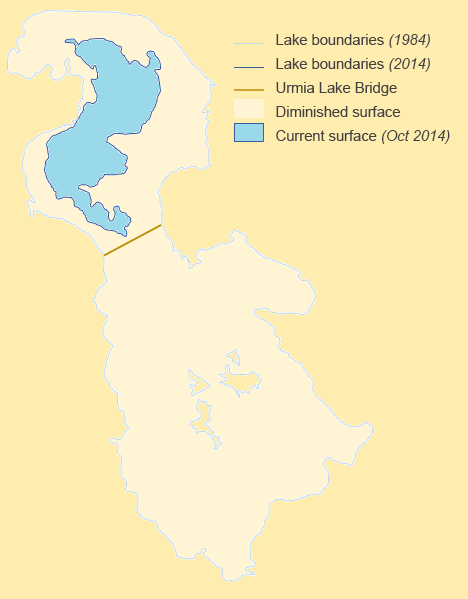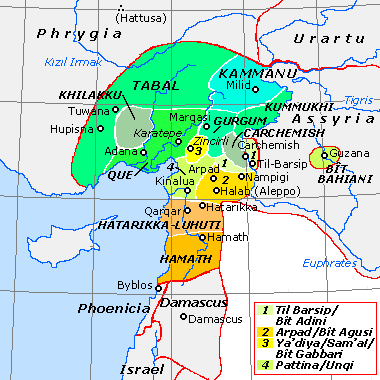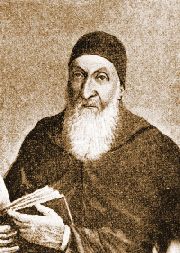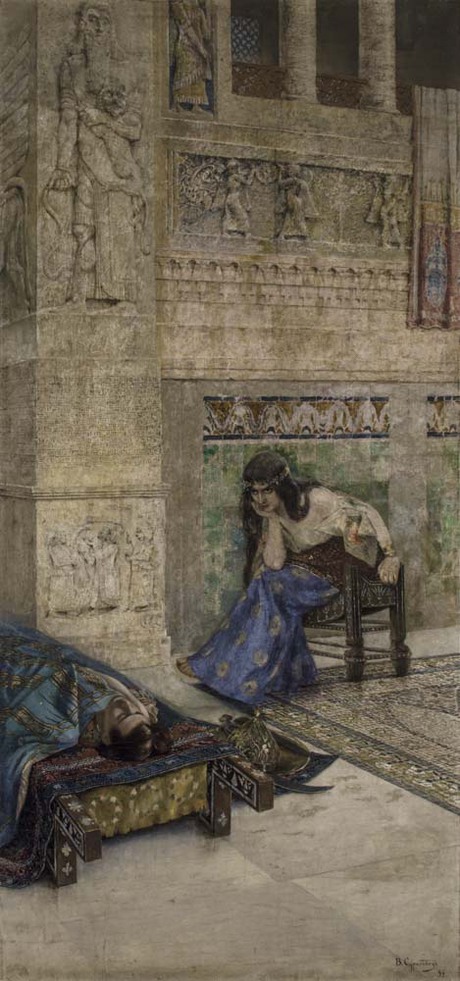|
Arame Of Urartu
Arame or Aramu (Armenian: Արամե; ruled 858–844 BC) was the first known king of Urartu. Living at the time of King Shalmaneser III of Assyria (ruled 859–824 BC), Arame fought against the threat of the Assyrian Empire. His capital at Arzashkun was captured by Shalmaneser. Sagunia, a previous capital, which was also captured by Shalamaneser, seems to have been located in the vicinity of Lake Van or Lake Urmia. Arame has been suggested as the prototype of both Aram (and, correspondingly the popular given name Aram) and Ara the Beautiful, two of the legendary forefathers of the Armenian people. Khorenatsi's ''History'' (1.5) puts them six and seven generations after Haik, in the chronology of historian Mikayel Chamchian dated to the 19th to 18th century BC. The name Arame is likely an Armenian name originally derived from Proto-Indo-European ''*rēmo-'', meaning "black". The name is likely etymologically related to Hindu Rama.Petrosyan, Armen. ''Toward the Origins of the ... [...More Info...] [...Related Items...] OR: [Wikipedia] [Google] [Baidu] |
List Of Kings Of Urartu
This article lists the kings of Urartu (Ararat or Kingdom of Van), an Iron Age kingdom centered on Lake Van in eastern Asia Minor. Early kings *Arame (also Aramu, Arama) 858 BC–844 BC *Lutipri 844 BC–834 BC (?) Rise to power *Sarduri I (also Sarduris I, Sedur I, Asiduri I) 834 BC–828 BC; known in Assyrian sources as Ishtarduri, moved the capital to Tushpa, expanded the fortress of Van, possibly established new dynasty. * Ishpuini (also Ishpuinis, Ispuini) the Establisher 828 BC–810 BC; expanded the empire and conquered Musasir. *Menua (also Menuas, Minua) the Conqueror 810 BC–785 BC; initially ruled jointly with his father Ishpuini and later jointly ruled with his son, Inushpua, greatly expanded the kingdom, organized the centralized administrative structure, fortified a number of cities and founded fortresses, developed a national canal and irrigation system. *Inushpua 788–786 BC (?); co-ruled with his father, Menua. Possibly killed in battle. ... [...More Info...] [...Related Items...] OR: [Wikipedia] [Google] [Baidu] |
Lake Urmia
Lake Urmia; az, اۇرمۇ گؤلۆ, script=Arab, italic=no, Urmu gölü; ku, گۆلائوو رمیەیێ, Gola Ûrmiyeyê; hy, Ուրմիա լիճ, Urmia lich; arc, ܝܡܬܐ ܕܐܘܪܡܝܐ is an endorheic salt lake in Iran. The lake is located between the provinces of East Azerbaijan and West Azerbaijan in Iran, and west of the southern portion of the Caspian Sea. At its greatest extent, it was the largest lake in the Middle East and the sixth-largest saltwater lake on Earth, with a surface area of approximately , a length of , a width of , and a maximum depth of . By late 2017, the lake had shrunk to 10% of its former size (and 1/60 of water volume in 1998) due to persistent general drought in Iran, but also the damming of the local rivers that flow into it, and the pumping of groundwater from the surrounding area. This dry spell was broken in 2019 and the lake is now filling up once again, due to both increased rain and water diversion from the Zab River by the Lake ... [...More Info...] [...Related Items...] OR: [Wikipedia] [Google] [Baidu] |
David Marshall Lang
David Marshall Lang (6 May 1924 – 20 March 1991), was a Professor of Caucasian Studies, School of Oriental and African Studies, University of London. He was one of the most productive British scholars who specialized in Georgian, Armenian and ancient Bulgarian history. Biography Lang was born in Bromley and was educated at Monkton Combe School and St John’s College, Cambridge where he was a Major Scholar and later held a Fellowship. Aged 20, having graduated from Cambridge, he was an officer in Iran when he was appointed in 1944 as acting Vice-Consul in Tabriz, Iran, where he acquainted himself with the city's Armenian population. In 1949 he was the member of staff for the School of Oriental and African Studies at University of London The University of London (UoL; abbreviated as Lond or more rarely Londin in post-nominals) is a federal public research university located in London, England, United Kingdom. The university was established by royal charter in 1836 as a ... [...More Info...] [...Related Items...] OR: [Wikipedia] [Google] [Baidu] |
Bit Agusi
Bit Agusi or Bit Agushi (also written Bet Agus) was an ancient Aramaean Syro-Hittite state, established by Gusi of Yakhan at the beginning of the 9th century BC. It had included the cities of Arpad, Nampigi (Nampigu) and later on Aleppo Arpad was the capital of the state-kingdom. Bit Agusi stretched from the A'zaz area in the north to Hamath in the south. Chronology According to Dan'el Kahn, there were seven stages of Bit Agusi history in Northern Syria in the ninth and eighth centuries BC. * Stage 1 (858–ca. 842 BC). Early on, Bit Agusi was apparently free of political alliances with neighbors. Arame, the second king of Bit Agusi, submitted to Assyria freely in 858 BCE, along with many other rulers of the region, including the southern Anatolia. * Stage 2 (841–823 BC). A period of Bit Agusi subjugation to Assyria. * Stage 3. Around 823 BC, or maybe a little later, Bit Agusi leads a local alliance opposing Assyrian hegemony, and achieves independence. * Stage 4. Also, soon ... [...More Info...] [...Related Items...] OR: [Wikipedia] [Google] [Baidu] |
Rama
Rama (; ), Ram, Raman or Ramar, also known as Ramachandra (; , ), is a major deity in Hinduism. He is the seventh and one of the most popular '' avatars'' of Vishnu. In Rama-centric traditions of Hinduism, he is considered the Supreme Being. Rama is said to have been born to Kaushalya and Dasharatha in Ayodhya, the ruler of the Kingdom of Kosala. His siblings included Lakshmana, Bharata, and Shatrughna. He married Sita. Though born in a royal family, their life is described in the Hindu texts as one challenged by unexpected changes such as an exile into impoverished and difficult circumstances, ethical questions and moral dilemmas. Of all their travails, the most notable is the kidnapping of Sita by demon-king Ravana, followed by the determined and epic efforts of Rama and Lakshmana to gain her freedom and destroy the evil Ravana against great odds. The entire life story of Rama, Sita and their companions allegorically discusses duties, rights and social responsibil ... [...More Info...] [...Related Items...] OR: [Wikipedia] [Google] [Baidu] |
Proto-Indo-European Language
Proto-Indo-European (PIE) is the reconstructed common ancestor of the Indo-European language family. Its proposed features have been derived by linguistic reconstruction from documented Indo-European languages. No direct record of Proto-Indo-European exists. Far more work has gone into reconstructing PIE than any other proto-language, and it is the best understood of all proto-languages of its age. The majority of linguistic work during the 19th century was devoted to the reconstruction of PIE or its daughter languages, and many of the modern techniques of linguistic reconstruction (such as the comparative method) were developed as a result. PIE is hypothesized to have been spoken as a single language from 4500 BC to 2500 BC during the Late Neolithic to Early Bronze Age, though estimates vary by more than a thousand years. According to the prevailing Kurgan hypothesis, the original homeland of the Proto-Indo-Europeans may have been in the Pontic–Caspian steppe of ... [...More Info...] [...Related Items...] OR: [Wikipedia] [Google] [Baidu] |
Mikayel Chamchian
Mikayel Chamchian)․ ( hy, Միքայէլ Չամչեան, 4 December 1738 – 30 November 1823), known also in English as Michael Chamich, was an Armenian Mekhitarist monk, historian, grammarian and theologian. He is best known for writing a comprehensive and influential history of Armenia in three volumes. Biography Mikayel Chamchian (whose baptismal name was Karapet) was born in Constantinople in 1738 to Abraham Chamchian. He received his primary education in Constantinople's Catholic schools, then was trained as a jeweler by his distant relative, the imperial jeweler and amira Mikayel Chelebi Duzian. Although Chamchian gained renown as a jeweler and had the opportunity to join Duzian as a full business partner, he instead decided to abandon secular life and join the Mekhitarist Congregation. In March 1757, Chamchian left for the Mekhitarists' monastery on the island of San Lazzaro degli Armeni in Venice with a letter of recommendation from Mekhitarist fathers Mikayel Sebast ... [...More Info...] [...Related Items...] OR: [Wikipedia] [Google] [Baidu] |
Hayk
Hayk ( hy, Հայկ, ), also known as Hayk Nahapet (, , ), is the legendary patriarch and founder of the Armenian nation. His story is told in the '' History of Armenia'' attributed to the Armenian historian Moses of Chorene (Movses Khorenatsi) and in the ''Primary History'' traditionally attributed to Sebeos. Fragments of the legend of Hayk are also preserved in the works of other authors, as well as in Armenian folk tradition. Etymology The name of the patriarch, ''Hayk'' (), is not exactly homophonous with the Armenian name for "Armenia," ''Haykʻ'' (). In Classical Armenian, ''Haykʻ'' is the nominative plural of ''hay'' (հայ), the Armenian word for "Armenian." While Robert W. Thomson considers the etymology of ''Haykʻ'' (Հայք) from ''Hayk'' (Հայկ) to be impossible, other scholars consider the connection between the two to be obvious and derive ''Hayk'' from ''hay''/''Haykʻ'' via the suffix ''-ik''. Martirosyan, Hrach (2010). ''Etymological Dictionary of th ... [...More Info...] [...Related Items...] OR: [Wikipedia] [Google] [Baidu] |
History Of Armenia (Moses Of Chorene)
The ''History of Armenia'' ( hy, Պատմություն Հայոց, ''Patmut'yun Hayots'') attributed to Movses Khorenatsi is an early account of Armenia, covering the legendary origins of the Armenian people as well as Armenia's interaction with Sassanid, Byzantine and Arsacid empires down to the 5th century. It contains unique material on ancient Armenian legends, and such information on pagan (pre-Christian) Armenian as has survived. It also contains plentiful data on the history and culture of contiguous countries. The book had an enormous impact on Armenian historiography. In the text, the author self-identifies as a disciple of Saint Mesrop, and states that he composed his work at the request of Isaac (Sahak), the Bagratuni prince who fell in battle in 482. Authorship Scholars have generally accepted Movses's History as an authentic script. For example, Gibbon in his ''History of the Decline and Fall of the Roman Empire'' (ch. 32) accepted the 5th century date of Movses ... [...More Info...] [...Related Items...] OR: [Wikipedia] [Google] [Baidu] |
Armenians
Armenians ( hy, հայեր, ''hayer'' ) are an ethnic group native to the Armenian highlands of Western Asia. Armenians constitute the main population of Armenia and the ''de facto'' independent Artsakh. There is a wide-ranging diaspora of around five million people of full or partial Armenian ancestry living outside modern Armenia. The largest Armenian populations today exist in Russia, the United States, France, Georgia, Iran, Germany, Ukraine, Lebanon, Brazil, and Syria. With the exceptions of Iran and the former Soviet states, the present-day Armenian diaspora was formed mainly as a result of the Armenian genocide. Richard G. Hovannisian, ''The Armenian people from ancient to modern times: the fifteenth century to the twentieth century'', Volume 2, p. 421, Palgrave Macmillan, 1997. Armenian is an Indo-European language. It has two mutually intelligible spoken and written forms: Eastern Armenian, today spoken mainly in Armenia, Artsakh, Iran, and the former Soviet ... [...More Info...] [...Related Items...] OR: [Wikipedia] [Google] [Baidu] |
Ara The Beautiful
Ara the Handsome ( hy, Արա Գեղեցիկ ''Ara Gełec‘ik'') is a semi-legendary Armenian hero and king. Ara is notable in Armenian literature for the popular legend in which he was so handsome that the Assyrian queen Semiramis waged war against Armenia to capture him and bring him back to her, alive. Ara is sometimes associated Arame of Urartu, who ruled the Kingdom of Urartu Biainili during the 9th century BC. Genealogy In Movses Khorenatsi's ''History of Armenia'', Ara the Handsome is presented as the son of Aram and a descendant of Hayk, the legendary forefather of the Armenians. Khorenatsi writes that Ara the Handsome had a son, also named Ara, by his wife, Nuard (Nvard). Ara, son of Ara, who was twelve years old at the time of his father's death, was appointed ruler of Armenia by Semiramis and later died in a war against her. Legend According to the legend, Semiramis (''Shamiram'' in Armenian) had fallen in love with the handsome Armenian King and asked him to m ... [...More Info...] [...Related Items...] OR: [Wikipedia] [Google] [Baidu] |
Aram (given Name)
Aram ( hy, Արամ , arc, אַרָם) is an Armenian patriarch in the '' History of Armenia'', and a popular masculine name in Aramaic and Armenian. It appears in Hebrew, Aramaic as Aram, son of Shem and in cuneiform as Arame of Urartu. People with the name * Aram I (born 1947) birth name Bedros Keshishian, Catholicos, head of the Catholicosate of the Great House of Cilicia (Armenian Apostolic Church), Antelias, Lebanon * Aram Andonian (1875–1952), Armenian journalist, historian and writer * Aram Asatryan (1953–2006), Armenian pop singer and songwriter * Aram Avakian (1926–1987), American film editor and director * Aram Ayrapetyan (born 1986), Russian football player * Aram Shahin Davud Bakoyan (born 1954), Iraqi politician * Aram Bakshian, American speech writer * Aram Barlezizyan (born 1936), Armenian academic * Aram Bartholl (born 1972), German artist * Aram Chobanian (born 1929), American university president * Aram Gharabekyan, Armenian conductor * Aram Haigaz ( ... [...More Info...] [...Related Items...] OR: [Wikipedia] [Google] [Baidu] |






